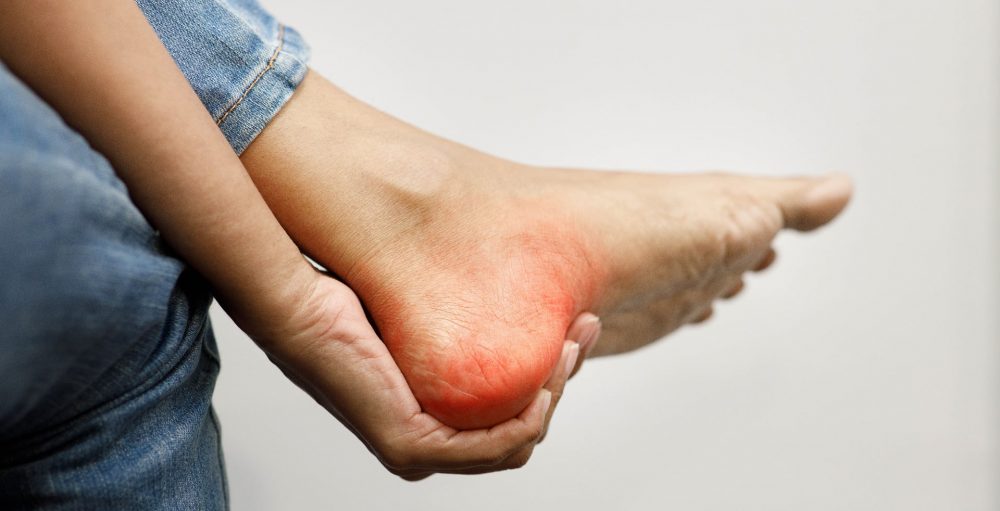Diabetic neuropathy is a neurological disorder caused by poorly managed diabetes. It is a common complication of type-1 and type-2 diabetes. Approximately 26% of people with type-2 diabetes already have a nervous system problem when diagnosed.
Nerves deliver signals between the brain and other parts of the body. These signals allow our body to feel and move things, control various body’s functions, for example, to digest food, urinate or defecate.
What causes diabetic neuropathy?
Over time, the uncontrolled and constantly high blood sugar (glucose) levels cause damage to the small blood vessels that provide oxygen and nutrients to the nerve cells.
Other factors include:
- Overweight
- High blood pressure
- High cholesterol
- High triglycerides
- Advanced kidney disease (diabetic nephropathy)
- History of coronary heart disease
- Excessive alcohol consumption
- Smoking
Symptoms
There are four types of diabetic neuropathy. A patient can experience one or more of them. These symptoms are often felt gradually, depending on the type of neuropathy. Many cases of diabetic neuropathy are unnoticeable and only noticeable when the condition is already severe.
Peripheral neuropathy
This type is the most commonly found. The area involved includes the lower leg to the sole, then continues to the hands and arms. Symptoms that can occur include:
- Numbness or reduced sensitivity to feel pain or changes in temperature
- Tingling until the burning sensation
- Sharp pain or cramps
- More sensitive to touch
- Muscle weakness
- Loss of reflexes, balance and coordination
- Have serious foot disorders, such as deep cuts, infections, and joint and bone pain
- Symptoms that occur due to peripheral neuropathy generally worsen at night
Autonomic neuropathy
The autonomic nervous system controls the functions of the heart, bladder, stomach, intestines, sex organs, and eyes. Diabetes can affect the nerves in those areas and cause these symptoms:
- Decreased ability to detect low blood sugar levels (hypoglycemia)
- Urinary disorders, such as urinary tract infections, difficulty urinating, or unable to resist urination
- Uncontrolled constipation or diarrhoea
- Nausea, vomiting, bloating, until decreased appetite due to slower emptying of the stomach
- Difficult to swallow
- Sweating a little, or too much
- Difficult to control body temperature
- Reduced ability of the eye to adjust from light to dark environment
- Increased heart rate at rest
- Blood pressure drops drastically after sitting or standing, causing fainting or feeling floating
- Sexual disorders such as erectile dysfunction, vaginal dryness, until decreased response to sexual stimulation
Radiculoplexus neuropathy
Radiculoplexus neuropathy affects the nerves of the thighs, hips, buttocks, or lower limbs. This case is more commonly found in people with type 2 diabetes, and older people. Radiculoplexus neuropathy is also known as diabetic amyotrophy, femoral or proximal neuropathy.
Symptoms of Radiculoplexus Neuropathy usually occur on one side of the body although it can extend to the other side of the body. Symptoms that can occur include:
- Severe pain in the hips and thighs or buttocks, which occurs throughout the day for a long time
- The thigh muscles become weak and shrink
- Difficult to stand from a sitting position
- Abdominal swelling
- Decreased body weight
Some symptoms can improve over time. However, before that, the symptoms can also be very bad and severe.
Mononeuropathy
Mononeuropathy or focal neuropathy is a damage to specific nerves, such as the face, torso, or lower limbs. This disorder is most commonly found in people with diabetes who are old. The appearance of mononeuropathy is sudden and can cause severe pain. However, this condition generally does not cause any problem in a long time.
The symptoms of mononeuropathy can disappear on their own, without any treatment in weeks or months, and depend on the area involved. Patients can experience pain in the shank or leg, lower back or hip, the front of the thighs, chest, or abdomen. Mononeuropathy can also cause nerve and eye disorders. The symptoms include difficult to focus, double vision, pain behind the eyes, and paralysis on one side of the face (Bell’s palsy).
In some cases, mononeuropathy occurs when the nerves are compressed. The most common problem is carpal tunnel syndrome. This condition can cause numbness or tingling in the hands and fingers, except for the little finger. Hand grips can also become weak, so objects that are held often fall.
Treatment
Diabetic neuropathy cannot be cured. However, there are three main ways to reduce the symptoms and prevent complications:
- Control blood sugar levels
Symptoms of diabetic neuropathy can be improved if blood sugar levels are well controlled. Control is carried out through the four main pillars of diabetes treatment, namely education, regulation of diet, exercise, and medication at appropriate doses.
- Take care of the feet to prevent complications
People with neuropathy do not always feel pain when their foot is injured. Therefore, routine foot care is needed to monitor any changes to the skin, such as cracks or sores, which can increase the risk of infection. For this reason, they are encouraged to get a comprehensive foot examination once a year. Besides, it is also important to carry out visual examinations on the feet every visit to the doctor (every 3-4 months). Every day, they have to avoid activities that can hurt the foot, be careful when cutting nails, wash and examine feet every day, and use socks and shoes that are comfortable so do not cause injury to the feet.
- Reduce pain due to neuropathy
Pain due to neuropathy is relatively difficult to relieve so it can affect the quality of life. Pain often worsens at night which can interfere sleep. Some types of drugs that are useful for controlling diabetic neuropathy are duloxetine and pregabalin. Other drugs that can be used, such as amitriptyline, gabapentin, tramadol, and alpha-lipoic acid.
Prevention
To prevent the occurrence of diabetic neuropathy, the patient must do diabetes management well and planned.
Diabetes management includes controlling blood sugar levels, blood pressure, and cholesterol levels until they achieve the target. This can be achieved by implementing a good eating plan, exercising regularly, taking antidiabetic and other drugs prescribed by the doctor regularly, limiting alcohol consumption, and stopping smoking.






Leave a Reply